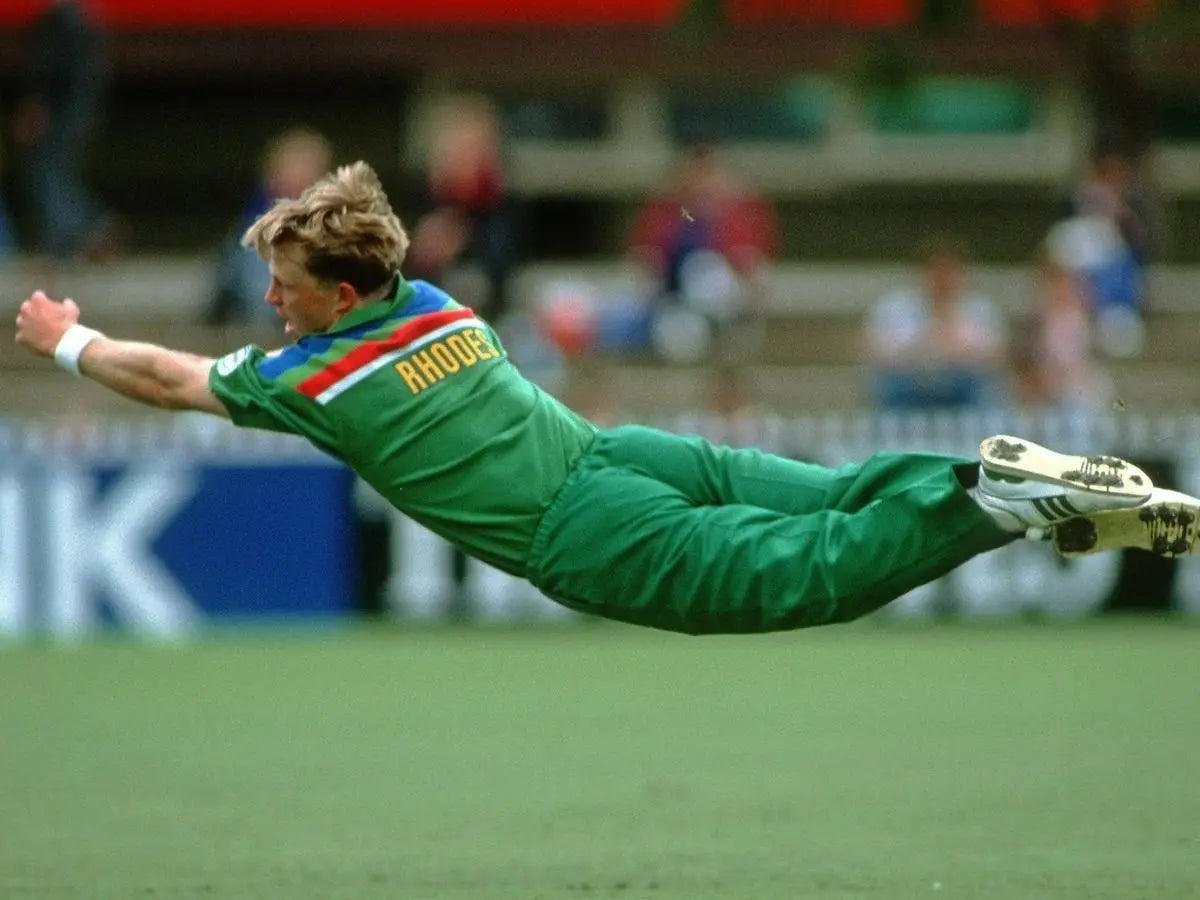Cricket is one of the oldest games in the world and has evolved over the years to one of the most dynamic ones. The sport which was only a battle between the willow and the ball has now become so much more. Even the slightest of factors like the dew on the grass, the cracks on the pitches matter. Such a dynamic sport requires a player to have all the qualities to be successful at the game.
Fielding is one such department where each player can contribute their level best. Even if you had a bad day at batting or bowling, you can always excel in the field. It's like having a chance at redemption and proving yourself.
Fielding is a form of athleticism. If you are a good athlete then more often than not, you will be a great fielder. That’s the bottom line.
In this chapter by ZAP about Cricket fielding techniques, here are some tips which will help you to improve your fielding, and allow you to save some precious runs for your team.
Cricket Fielding Technique: A Step by Step Guide
Getting comfortable is the top priority

- No matter where you are fielding in the game, it is vital to balance your body into a comfortable position. This at ease state, just before the delivery takes place, allows you to react and set off rapidly if required.
- You should kind of be well-prepared for a rapid reaction, which really is definitely likely to come quickly when the leather ball mostly comes your way in a pretty urgent manner.
- Take your start. Start means you take two to three steps towards the batsman. This makes sure you are agile and ready to quickly move your body in any direction.
- Make sure that the legs generally are just a bit sort of wider than the shoulder-width apart(for faster reaction time and unconventional bounce expectancy) Standing correctly on the surface ensures you distribute your body weight equally on both feet and can anticipate the ball rolling toward you.
Read about Cricket Fielding Positions to better understand this guide.
Hand position

- There are two ways of completing a catch. These are two important patterns you should know as a beginner.
- If the ball is coming at you above the stomach level, then simply put your hands together and point your fingers in the upward direction. This method is known as the reverse cup method.
- If the ball is below your stomach level, then just change the direction of your fingers pointing downwards. This method of completing a catch is known as the orthodox cup method.
- It will automatically become your second nature to complete catches like this. Plus, with multiple practice sessions, you will have room to improvise.
Note: While standing in slips, try to bend your knees a little. In this way, the ball coming at your shoulder height will be easy to catch. Also, make sure there is no gap between the hands. Furthermore, many cricketers prefer a unique and unorthodox way of catching the ball. If the improvising manner suits your style then you must do it. However, learning the basics is a must for developing a core foundation.
Eyes on the ball

Always have your eyes set on the ball. There are two ways in which you can do this
- Following the ball
Many fielders prefer to watch the complete journey of the ball. Right from the start till the very end of pitching! This enables them to track the trajectory and use their presence of mind for saving runs. However, fielders who are much squarer to the wicket(Point or square leg), tend not to follow this. Mostly because it involves a lot of head movement for them.
- Following the batsman
The other way is to follow the batsman. By implementing this you can notice the angle at which the ball leaves the bat. It also gives an advantage of knowing the batsman’s adjustment right before playing the shot.
You would have an extra second to preempt the direction of the hit and save some crucial runs.
Decide what is the most comfortable way for you and simply implement that one. While trying this approach for the first time, you may encounter difficulty in hand and eye coordination. Therefore, choose the method that restricts your coordination the least and ensures maximum success ratio.
If you're a wicket keeper and wear helmets while being behind the stumps, then wear a cricket helmet which is light weight and comfortable.
Back up the throw and avoid misfielding
- This is one of the most important aspects of fielding that you should learn as a beginner. Backing up a throw can save some valuable runs for your team.
- Whenever the ball is thrown at the keeping or bowling end, you should try to place yourself 15-20 yards behind the line of the ball. If the keeper or the fielder at the bowling end misses the opportunity to collect the ball, the backup fielder can still stop it from reaching the boundary.
- This not only prevents those extra singles by the batsmen but also creates a run-out opportunity for the team. If you are a beginner of the game, you’ll probably hear the importance of backing up, from your coaches and teammates.
- In case of a misfield, try not to panic and recover the ball immediately. This will create a chance of dismissal if the batsman risks another single. Therefore, it is important to cover up a misfield and leave nothing to chance.
Direct hit- Practice, Practice, and Practice

Credit: Hindustan Times
- Who doesn’t love the seamless visual of a terrific direct hit at the stumps? Especially those extra deep throws aimed precisely at dislodging the bails.
- If you want to become a threat like this for a batsman, start practicing a lot in the early stage of your career. You can take the help of a mounted plastic stump to repeatedly strike the stump with accuracy, or take the charge in those practice matches.
- This art of accuracy comes with experience. This is true for almost all the aspects of fielding. The more you work on your skills and techniques, the better it will be for you in the future.
- You can practice a Round arm throw for ensuring the accuracy of your hit. The full-fledged motion of the arm allows for a better momentum while throwing the ball, and generates maximum muscle power.
Roles of a Fielder on the cricket ground:
There are 11 players of the fielding side on the cricket ground and each one of them has a different role assigned.
The wicket keeper:

Credit: ZEE News
The wicket keeper stays behind the stumps and dictates the match from behind. The job to help dictate the captain in proper positions according to the strategy is an important part of wicket keeping. Every keeper needs wicket keeping gloves and pads that are comfortable and add to your experience.
Read More: MS Dhoni
Slip positions:

Credit: Pitchvision
The slips are one of the most difficult positions to field at. Standing right beside the keeper, you need to be ready for a split second reaction catch at all times. You can be a good slip fielder if you have a good reflex reaction, so work on building those reaction speeds by adding reaction training in your training routine.
While training for slip catches in the practice sessions, wear a pair of inner gloves that help to keep your hands and finger's safe.
Close fielding positions:

Credit: Sportskeeda
Fielding at these positions require a lot of courage. You stand very close to the batsman and there’s a high chance that the ball off the batter bat may hit you. But cricket is all about taking those blows and rising up the ashes. So, have a good reaction timing, hold on to anything that lands in your bucket like hands at the silly point, silly midwicket, silly mid on/off positions.
Fielding in the inner circle:

Credit: ESPN Cricinfo
Fielding in the inner circle during the powerplay requires amazing agility and coordination at the same time. There are more fielder’s in the inner circle during the powerplay fielding restrictions. This is the time when the ball is new and even a slight punch can make the ball run towards the boundary. Batter often try to find out gaps between fielders and make the most out of powerplay. So, as a fielder, you need to be aware of the gaps between you and your co fielder, cover them up by quickly acting, make a dive at times if the ball is too far. It is here that you need to have an excellent accuracy. If the batsman leaves his crease, your throw should directly be at the stumps to run them out.
Fielding outside the circle:

Credit: The Independent
Fielders that stay outside the circle are considered to be the best in business. They need to cover huge distance just to make a dive and save those 1 or 2 crucial runs for the team. They are the ones who take those magnificent catches in the deep and leave everyone in awe. Fielders at this position also need to have a good throwing arm, to make the quick and accurate throws at the keeper or the bowler’s end to inflict a run out.
Read More: Cricket Rules | How to Play Cricket
Cricket Fielding Exercises:
While you train to become a good batter or a bowler, you cannot overlook fielding as it is one of the most important skills on the ground. Training for your reflexes, agility and speed and accuracy is important. Read our comprehensive article, Cricket Exercises and Workouts to learn more and become the best fielder on the ground.
Who is the best fielder in the World?
While all players on the ground are super safe fielders, there are some that have just redefined saving runs and catching balls and always leave everyone in awe. Here are some of the best fielders in cricket:
Jonty Rhodes:

Credit: myKhel
Former South African player Jonty Rhodes is regarded as the best fielder of all time. Rhodes possessed superior fielding abilities that no one else can equal. In his ODI and test careers, he has taken 105 and 34 catches, respectively. He was among the best fielders in the entire world.
AB De Villiers:

Credit: ICC
Former team captain and South African batsman AB de Villiers could power hit the ball anywhere with the bat and is a fantastic batter. He is also an excellent fielder. It's amazing how agile he used to be to catch the ball. Being a wicket keeper early on in his career, he developed some excellent fielding skills. He was a very spirited player and could undoubtedly alter the outcome of the game with the bat or just by his fielding.
Ravindra Jadeja:

Credit: The New Indian Express
The outstanding all-around player for the Indian squad, Ravindra Jadeja, is regarded as one of the best in the world. In addition to his abilities in the batter's box and the bowler's crease, Ravindra Jadeja is brilliant in the field. Jadeja can quickly change the game through the catches he grabs onto, his bullet arm direct hits and the diving boundary saves. He is capable of making numerous impossible catches and has frequently inflicted runouts to turn the match's odds in India's favour.
Glenn Maxwell:

Credit: Hindustan Times
Glenn Maxwell is a complete product, regardless of the game's format. He is and will be best known for his all round ability in the T20s, but he also puts on some incredible in the field. Glen Maxwell, a natural winner, makes an effort to stand out in the field even when he is not performing well with bat and ball.
Steve Smith:

Credit: The Times of India
An Australian great, with 8,000 runs in Test cricket, Steve Smith, is one of the best batsman in the world currently. On top of being a top batsman, Smith is excellent in the field. He exceeded at holding onto catches in the slips, even those which seemed impossible. He is also a dependable outfielder and never hesitates to put in the long hours.
Conclusion:
Becoming a good fielder is essential for contributing to your team's success. So, remember to practice consistently, focus on improving your hand-eye coordination, and work on your agility and speed. With dedication and effort, you can become a standout fielder in the world of cricket.
Now that you have read about Cricket Fielding Tips and Techniques, here are some more articles we recommend reading:
Cricket Batting Technique | Cricket Shots | Bowling Action | Batting Stance | How to Calculate Batting Average



Share:
Learn how to Play Cricket Shots Like a Champion
County Cricket: A Glimpse Into Tradition